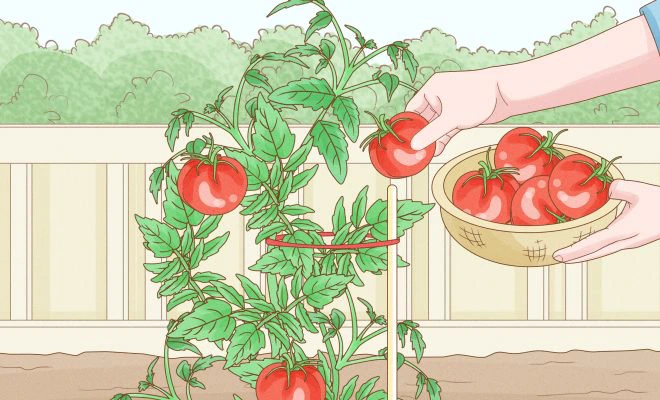
Tomatoes are one of the most popular crops grown in home gardens around the world. Their versatility allows them to be used in salads, sauces, soups, and countless other dishes. While most gardeners appreciate having fresh tomatoes available throughout the growing season, many dream of cultivating big, luscious fruits that are impressive both in flavor and size.
In this article, we’ll explore some proven strategies and share tips on how to grow big tomatoes successfully in your own garden.
1. Choose the Right Variety
The first step in growing large tomatoes is selecting the correct variety. Some tomato types are specifically bred for their size. Beefsteak tomatoes, for example, can achieve significant weight and diameter when grown in optimal conditions. Investigate different varieties by reviewing seed catalogs and consulting with other growers to find large fruit types that are well-suited to your growing region.
2. Start with Healthy Seedlings
Big tomatoes start with healthy plants. To give your seedlings a strong start, sow seeds indoors 6-8 weeks before transplanting outdoors. Ensure they receive plenty of light and maintain optimal temperature and moisture levels. Choose robust seedlings with thick stems that are destined to support heavyweight fruits.
3. Prepare Nutrient-Rich Soil
Like all plants, tomatoes require vital nutrients to grow large and healthy. Tomatoes are particularly heavy feeders and will require ample amounts of nitrogen, phosphorus, potassium (N-P-K), as well as other essential micronutrients like calcium and magnesium.
Start by amending your soil with organic matter, such as compost or aged manure. This introduces vital nutrients while also enhancing essential drainage capabilities needed by tomato roots.
4. Proper Plant Spacing
Planting tomatoes too close together can stunt growth due to competition for water and nutrients, ultimately resulting in smaller fruits. Allow enough space between plants – generally 24 to 48 inches, depending on the variety – to promote optimal growth and ensure adequate access to sunlight.
5. Pruning and Training
Strategically pruning your tomato plants can help funnel energy into the fruits rather than unnecessary foliage. Make a habit of removing suckers that grow between the main stem and leaf nodes, ensuring more resources are directed towards producing bigger tomatoes.
Staking or caging your plants not only provides necessary support but also keeps fruit off the ground, reducing the likelihood of rot and disease. Use strings, stakes, or commercially available cages to keep your tomatoes upright and well supported.
6. Regular and Consistent Watering
Tomato plants require consistent watering to prevent stress that can lead to smaller fruits or even blossom-end rot. A good rule of thumb is providing about 1-2 inches of water per week, although this may vary depending on climate conditions and soil types. Installing a drip irrigation system can be an effective way to maintain consistent moisture levels while minimizing the risk of diseases related to excess water.
7. Timely Harvesting
Monitor your tomatoes closely as they ripen on the vine and pick them when they reach their peak size and ripeness. This allows you to enjoy their delicious, full flavor while also encouraging the plant to direct energy towards growing larger fruits as well.
Conclusion:
Growing big tomatoes takes patience, care, and attention to detail, from choosing the right variety to providing optimal conditions for growth. By implementing these tips and strategies in your garden, you can enjoy bountiful harvests of large, delectable tomatoes that will impress friends and family alike. Happy gardening!